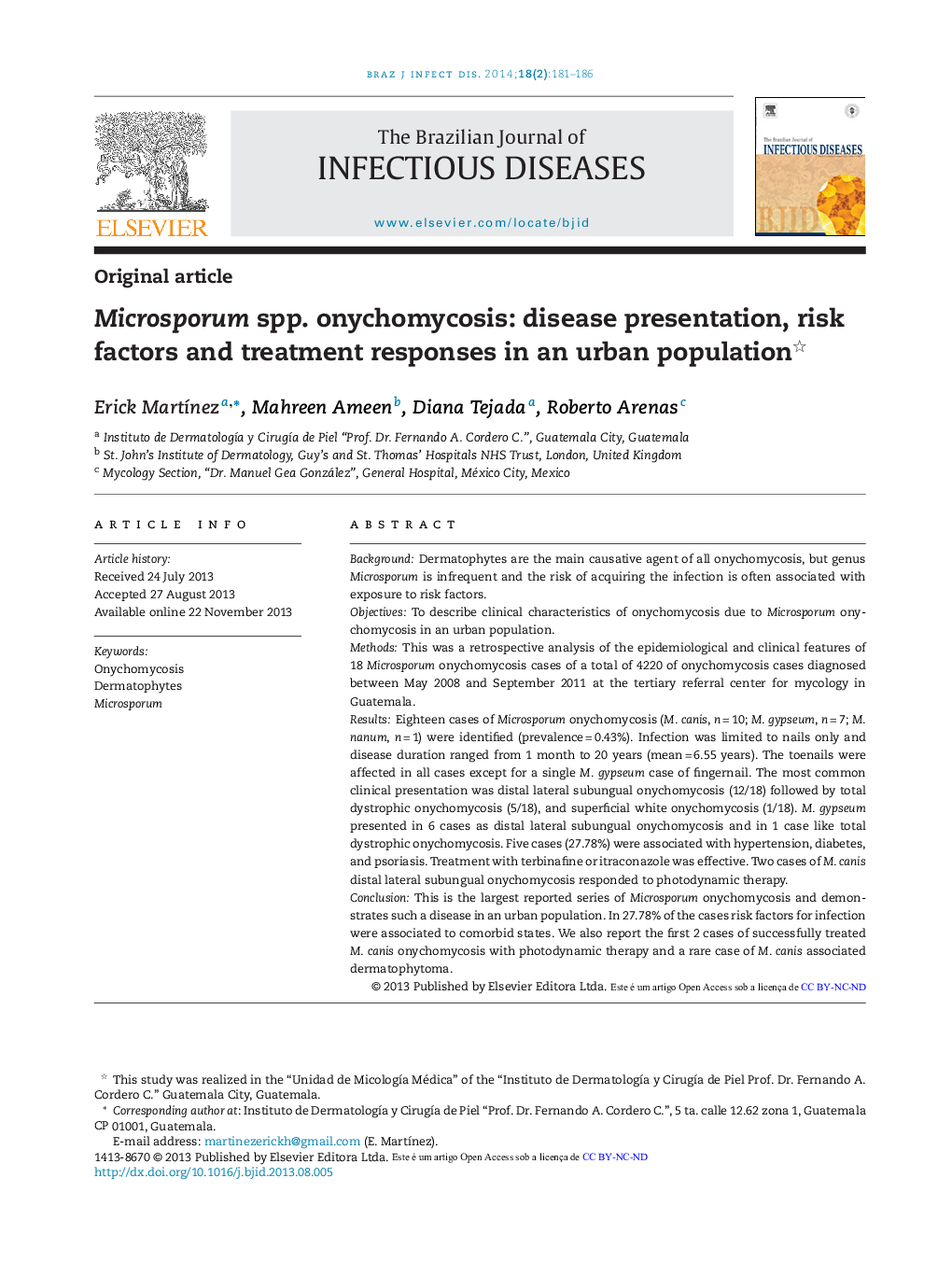| Article ID | Journal | Published Year | Pages | File Type |
|---|---|---|---|---|
| 3344255 | The Brazilian Journal of Infectious Diseases | 2014 | 6 Pages |
BackgroundDermatophytes are the main causative agent of all onychomycosis, but genus Microsporum is infrequent and the risk of acquiring the infection is often associated with exposure to risk factors.ObjectivesTo describe clinical characteristics of onychomycosis due to Microsporum onychomycosis in an urban population.MethodsThis was a retrospective analysis of the epidemiological and clinical features of 18 Microsporum onychomycosis cases of a total of 4220 of onychomycosis cases diagnosed between May 2008 and September 2011 at the tertiary referral center for mycology in Guatemala.ResultsEighteen cases of Microsporum onychomycosis (M. canis, n = 10; M. gypseum, n = 7; M. nanum, n = 1) were identified (prevalence = 0.43%). Infection was limited to nails only and disease duration ranged from 1 month to 20 years (mean = 6.55 years). The toenails were affected in all cases except for a single M. gypseum case of fingernail. The most common clinical presentation was distal lateral subungual onychomycosis (12/18) followed by total dystrophic onychomycosis (5/18), and superficial white onychomycosis (1/18). M. gypseum presented in 6 cases as distal lateral subungual onychomycosis and in 1 case like total dystrophic onychomycosis. Five cases (27.78%) were associated with hypertension, diabetes, and psoriasis. Treatment with terbinafine or itraconazole was effective. Two cases of M. canis distal lateral subungual onychomycosis responded to photodynamic therapy.ConclusionThis is the largest reported series of Microsporum onychomycosis and demonstrates such a disease in an urban population. In 27.78% of the cases risk factors for infection were associated to comorbid states. We also report the first 2 cases of successfully treated M. canis onychomycosis with photodynamic therapy and a rare case of M. canis associated dermatophytoma.
